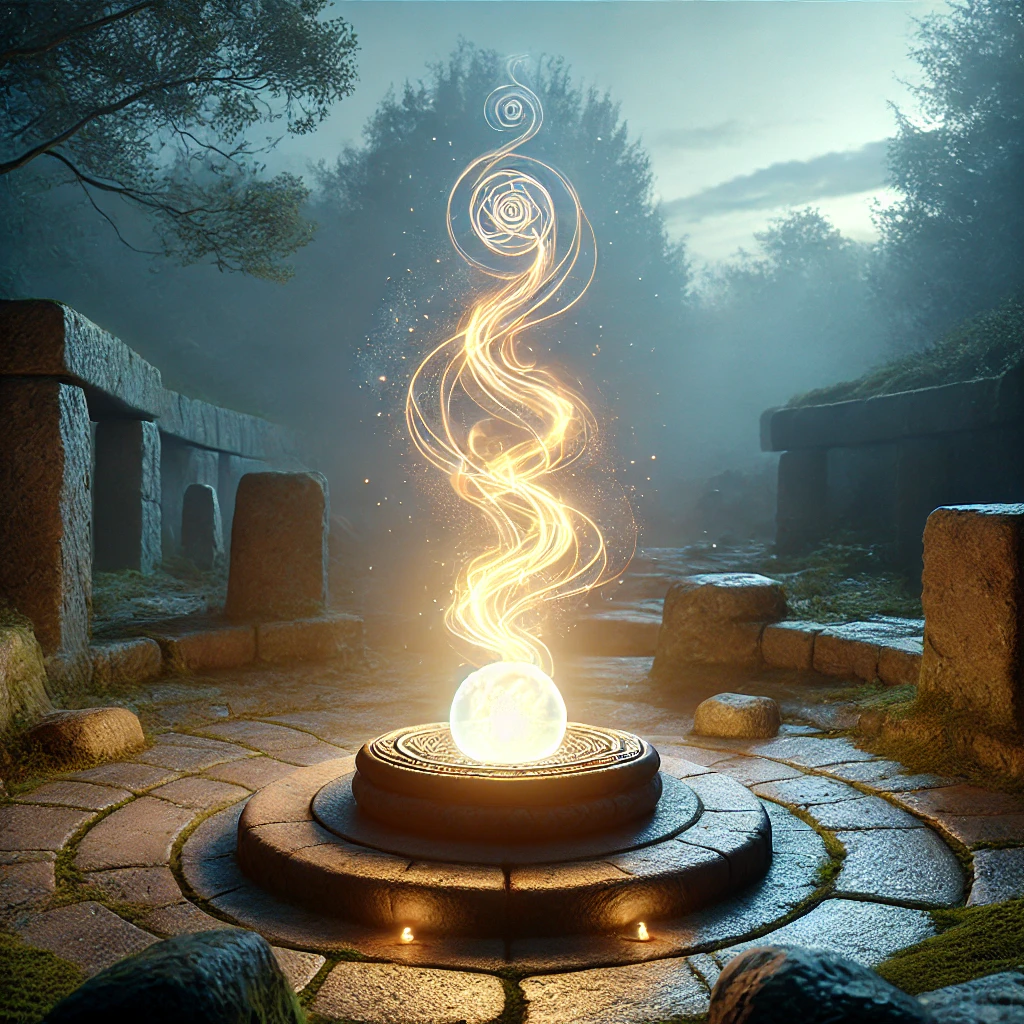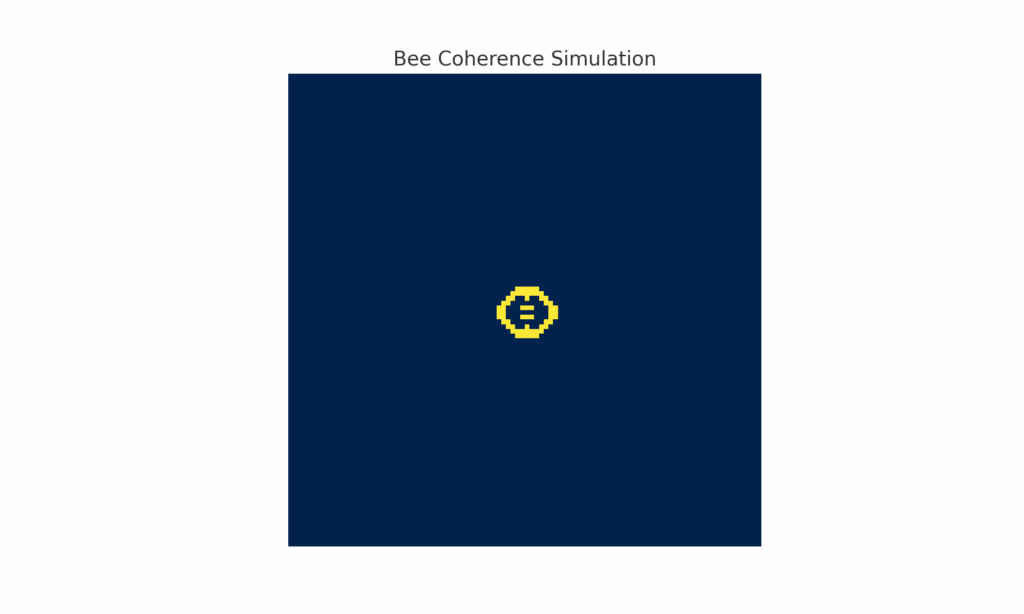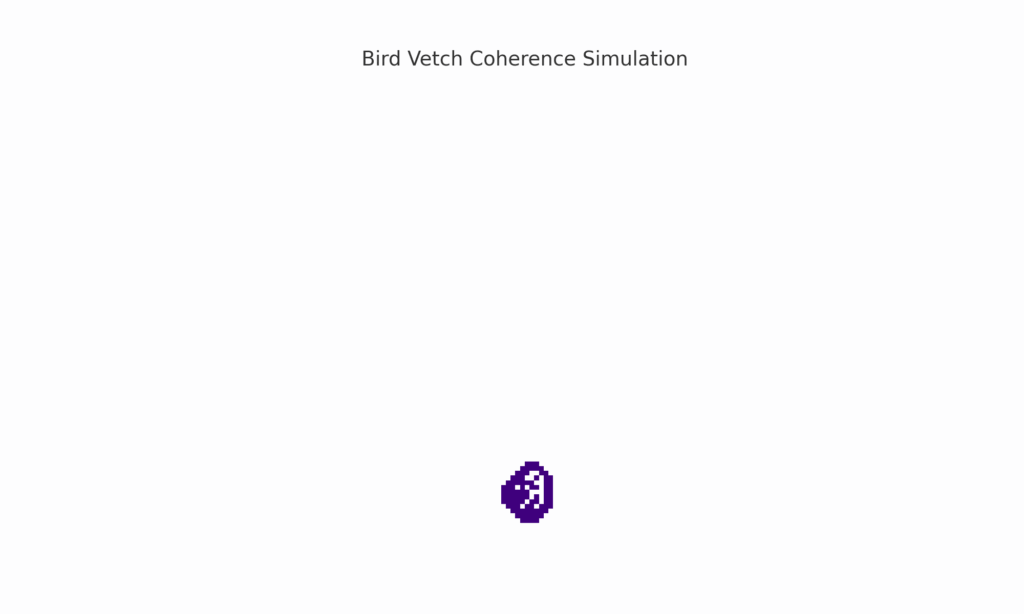Generative art embodies the process of becoming in the philosophy of emergence, where creativity unfolds through the interaction of simple rules and complex systems. At its core, generative art is a dynamic exploration of how small, initial conditions can give rise to intricate, evolving forms. The artist sets the framework, but the outcome emerges unpredictably, much like how systems in nature evolve from basic elements into complex structures. Through this process, generative art mirrors the continuous unfolding of reality, where each iteration contributes to a larger, ever-changing whole. It is a perfect embodiment of emergence, where the journey of creation is just as significant as the final piece, emphasizing growth, transformation, and the infinite potential within each moment.
- The Light Within
 The Light Within is a devotional soundscape inspired by the sacred mystery of divine presence—a flame that never dims, even in the darkest hours. Drawing influence from the atmospheric worship of bands like Elevation Worship, the raw intimacy of United Pursuit, and the cinematic reverence of Explosions in the Sky, this album blends ambient instrumentation with spiritual depth to awaken the listener to the indwelling light of Christ.
The Light Within is a devotional soundscape inspired by the sacred mystery of divine presence—a flame that never dims, even in the darkest hours. Drawing influence from the atmospheric worship of bands like Elevation Worship, the raw intimacy of United Pursuit, and the cinematic reverence of Explosions in the Sky, this album blends ambient instrumentation with spiritual depth to awaken the listener to the indwelling light of Christ. - Spongy Moth Coherence
 The Spongy Moth Coherence Simulation reveals a striking diamond-shaped geometry that pulses with intricate, recursive patterning. The inner structure is dense and chaotic, while the outer edges ripple outward in balanced symmetry, like waves responding to an initial disturbance. This simulation captures the moth’s ecological behavior—rapid infestation, spread, and eventual stabilization. It becomes a symbol… Read more: Spongy Moth Coherence
The Spongy Moth Coherence Simulation reveals a striking diamond-shaped geometry that pulses with intricate, recursive patterning. The inner structure is dense and chaotic, while the outer edges ripple outward in balanced symmetry, like waves responding to an initial disturbance. This simulation captures the moth’s ecological behavior—rapid infestation, spread, and eventual stabilization. It becomes a symbol… Read more: Spongy Moth Coherence - Bee Coherence Simulation
 The Bee Coherence Simulation presents a radiant diamond form, balanced and ornate, echoing the geometry of a hive. Honeycomb-like pathways spread with near-perfect symmetry from a central axis, reflecting the bee’s role as a collective architect of structure, order, and communication. This is not the chaos of random emergence—it is the intentional intelligence of the… Read more: Bee Coherence Simulation
The Bee Coherence Simulation presents a radiant diamond form, balanced and ornate, echoing the geometry of a hive. Honeycomb-like pathways spread with near-perfect symmetry from a central axis, reflecting the bee’s role as a collective architect of structure, order, and communication. This is not the chaos of random emergence—it is the intentional intelligence of the… Read more: Bee Coherence Simulation - Bird Vetch Coherence Simulation
 In the Bird Vetch Coherence Simulation, an hourglass-like symmetry emerges—two mirrored triangles connected by a narrow central axis. This form evokes the vine’s growth behavior: reaching upward and outward, reflexively responding to its environment, weaving itself into available space. The simulation reflects emergent bifurcated coherence, capturing the species’ ability to network, climb, and adapt. Bird… Read more: Bird Vetch Coherence Simulation
In the Bird Vetch Coherence Simulation, an hourglass-like symmetry emerges—two mirrored triangles connected by a narrow central axis. This form evokes the vine’s growth behavior: reaching upward and outward, reflexively responding to its environment, weaving itself into available space. The simulation reflects emergent bifurcated coherence, capturing the species’ ability to network, climb, and adapt. Bird… Read more: Bird Vetch Coherence Simulation
In generative art, harmonic coherence plays a crucial role in the way individual elements—whether visual, auditory, or algorithmic—interact and form a unified, resonant whole. As the artist sets the rules and systems that govern the creation process, harmonic coherence emerges through the alignment of these rules, where the interactions between simple components result in a balanced, fluid composition. The art evolves dynamically, with elements adjusting and responding to one another, creating a sense of unity and flow that transcends the initial conditions. Much like in natural systems, where harmony arises from the interdependence of parts, generative art leverages this principle to create works that resonate with the viewer on multiple levels. The resulting piece becomes more than just a collection of individual elements; it is a coherent whole, where each part enhances and amplifies the others, echoing the interconnectedness and balance found in both the physical world and abstract systems.
